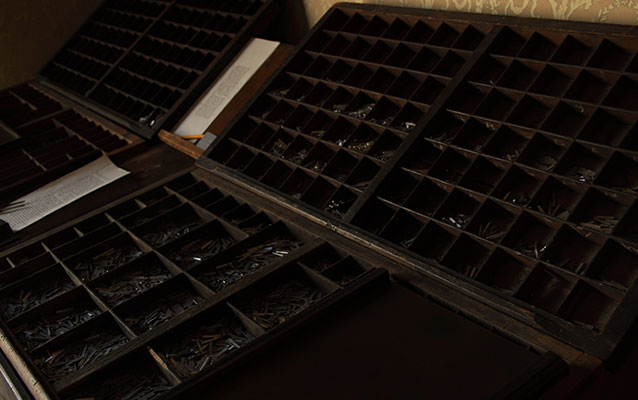Last updated: March 25, 2020
Lesson Plan
Printmaking - Landscapes

- Grade Level:
- Middle School: Sixth Grade through Eighth Grade
- Subject:
- Literacy and Language Arts,Math,Science,Social Studies
- Lesson Duration:
- 90 Minutes
- State Standards:
- Historical, Cultural, and Social Contexts.
Creative Expression and Communication.
Essential Question
What is the printmaking process?
Objective
Recognizing and creating landscapes and seascapes using the printmaking process.
Background
Students will become familiar with the printmaking process, and be able to recognize and create landscapes and seascapes.
Visual Art Standard: Historical, Cultural, and Social ContextsBenchmark: Compare and contrast the distinctive characteristics of art forms from various cultural, historical, and social contexts.
Visual Art Standard: Creative Expression and Communication
Benchmark: Achieve artistic purpose and communicate intent by selection and use of appropriate media.
Preparation
Materials for this plan include Inovart printfoam or scratch-foam blocks (Styrofoam trays cut into rectangles also work), manila paper cut size of printblocks, white construction paper or printmaking paper cut to same size, water-based printing inks, brayers, barens or wooden spatulas, large tray with water, stack of large newsprint to use a blotter paper, trays for spreading ink, newspaper.
Materials
Procedure
Direct Instruction (10 minutes): Have students examine the landscape print that Orville Wright made as a young man. Ask them to identify some its features, and try to describe the process that was used to create it. Share examples of other landscape and seascape prints, like those by Katsushika Hokusai. Have students brainstorm some ideas for making their own landscape pictures.
Individual Work Period (20 minutes): The instructor will need to demonstrate the printmaking process.
First, the artist makes a sketch on practice paper. Once the artist is satisfied with the image, the same picture is drawn on the Styrofoam block (you can use tracing paper, and trace the image on the block, but I have not been happy with this process).
Draw very lightly with a pencil or pen, and then press the lines more deeply into the block. If the lines are too shallow, the image will not transfer onto the print paper. Point out that the image will be reversed in the final print. As a result, words may pose a significant challenge. The instructor may not want to allow the use of words. A finished example of a print block and final print can help illustrate this point.
Once the block is finished, place a piece of white construction paper or printmaking paper in the tray of water. Let it soak briefly, then drip dry. When the excess water has drained off, place the paper in the large newsprint and press it lightly to dry. The paper needs to be damp, but not soaking wet in order to successfully take the ink from the print block. Experiment with this process prior to working with a group of students.
Using a brayer, spread a thin layer of ink on a tray. Roll in perpendicular lines to get good coverage. Roll the ink onto the print block, again using perpendicular lines.
Place the damp paper on top of the print block carefully, and press it down. Rub the entire surface with a wooden spatula or baren to get an even print transfer.
Pull the print off of the block and place on a drying rack or table.
Students can clean and alter their block, or make additional prints with different colors of ink or paper.
Clean Up (10 minutes): Students will need to wash print blocks, and place all wet materials on a drying rack.
Vocabulary
Printmaking – a process for making multiple copies of an image, using a print block and ink.
Landscape – a picture showing a large area of land, and depicting various features of local geography.
Seascape – a picture showing a large area of water, showing aspects of its surface or inhabitants.
Assessment Materials
The success of this project can be ascertained through the quality of the artwork. The instructor can also ask a series of questions regarding the objectives of the lesson to determine how well students have comprehended the material.
Alternatively, the rubric below can be used to rate each child's performance during the working period.
Art Rubric
| Category | Possible Points | Points Earned |
| Craftsmanship | 20 | |
| Time on Task | 20 | |
| Following Assignment Guidelines | 20 | |
| Use of Materials | 20 | |
| Clean Up | 20 |
Additional Resources
History – The group can explore the importance of the printing press, and the impact it had on the publication and spread of books.
Students can also explore the impact of Japanese prints on the Impressionist artists in the late 1800s.
The instructor might ask students to think about other technological advances that have changed the way artists think about and create art (cameras, televisions, film, the internet, and so on).
Some students may need assistance from an adult or responsible peer walking through the steps of the process. The nature of the image can be altered as well. Some students may only be able to draw a series of lines. A print can be made from any image, so long as the lines are sufficiently deep in the print block.
The Man Who Painted A Mountain, by Deborah Kogan Ray
Hokusai: Prints and Drawings, by Matthi Forrer
Simple Printmaking, by Peter Weiss
The History of Printmaking, by Jennifer Riggs
